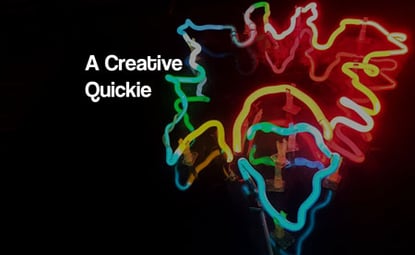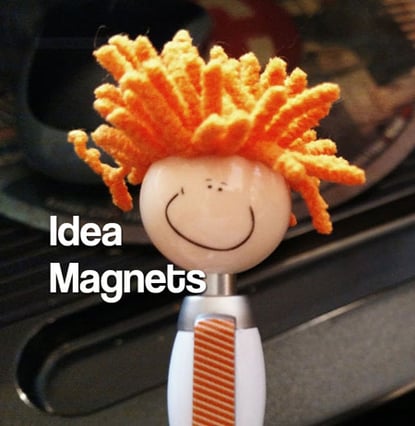Holly Green is a fellow contributor to the Blogging Innovation website, and is currently the CEO and Managing Director of THE HUMAN FACTOR, Inc. She's the author of "More Than a Minute™ – How to be an Effective Leader & Manager in Today’s Changing World." She blogs frequently on business leadership issues and is a columnist for the Worldwide Association of Business Coaching.
She's guest blogging today on the differences between "creativity" and "innovation" and how ignoring the difference gets in the way of real marketplace success:
 Does your organization come up with a lot of good ideas that never seem to make it to market as successful products or services?
Does your organization come up with a lot of good ideas that never seem to make it to market as successful products or services?
If so, you may be confusing innovation with creativity. Although the two are often synonymous in the minds of business leaders, they actually require very different processes and produce very different outcomes.
How are they different?
Creativity is the process of connecting previously unrelated concepts, ideas, or experiences into a new construct or idea. It can spring from the mind of one individual. Or it can be the end result of a formal group process, such as brainstorming sessions or simply bringing people together to exchange ideas. Creativity contributes to the innovation process, but by itself does not constitute innovation.
Innovation involves more than just coming up with new ideas. It takes those new ideas and transforms them into something of value. Unlike creativity, innovation is almost always a group process. It typically requires expertise from several different disciplines, and almost always includes a number of diverse contributors.
Innovation requires three essential ingredients to succeed: idea generation (creativity), idea evaluation, and implementation. Most companies do well in one or two of these areas. Very few do well in all three. Which is why we rarely see real innovation in today’s markets.
One of the biggest barriers to innovation occurs when companies confuse creativity with innovation. They crank out plenty of new and creative ideas. But they stop there, thinking they have accomplished the goal. In reality, all they’ve done is complete the first step in the innovation recipe. They’ve preheated the oven, rolled the dough and put the sauce and toppings on. But they haven’t put the pizza in the oven.
I see many companies investing a lot of time and money in teaching employees to think “out of the box.” But new ideas are a dime a dozen. The hard part is turning those ideas into new products and services that customers will reach into their pocketbooks and pay for. So true innovation requires not just creativity, but also knowledge about what your customers want and need, coupled with implementation.
To enhance your innovation efforts, start by recognizing that creativity and innovation require different skills sets.
Creativity uses a right-brained, non-linear process; innovation is more left-brain oriented. Getting people to become more creative involves teaching them how to notice, use, combine, and integrate diverse stimuli, to make connections where none exist. Promoting innovation requires that people learn how to take new ideas and convert them into value for customers or other stakeholders.
Creativity asks people to think differently. Innovation asks them to act differently. Smart companies teach their people how to do both.
You can’t innovate without creativity. And implementing the same old ideas faster and better does not produce much in the way of new value. True innovation comes only when you combine new ideas and knowledge, and then implement to create new value. - Holly Green



